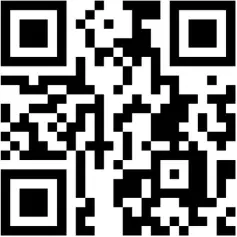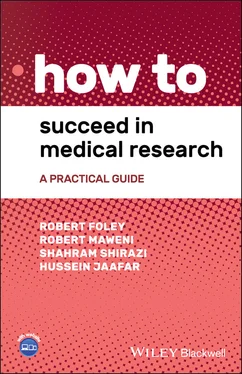This is despite these activities being recognised as essential by undergraduate and postgraduate educators. In fact, they are a key part of selection for postgraduate employment. Candidates who demonstrate awareness of and proficiency with research and other academic activities such as teaching are highly sought after. However, many candidates, particularly those who don't take time out of their undergraduate programmes or pursue a higher degree, tend not to have had the exposure and opportunities to engage with these academic activities as students and junior healthcare professionals. Many will have never undertaken any formal research or teaching during this time. Furthermore, we have found that many students with an interest in medical research don't have the skills and experience required to get started, and they may lack mentors and senior colleagues with the time, interest, or experience to help them.
We were fortunate that, at an early stage in our training, either as students or junior doctors, we had access to high‐quality research units with experienced mentors. This nurtured our interest, and we have since sought higher research degrees that have allowed us to explore this further. We have written this book for those who do not get this opportunity. This book is a guide to help at each step of the research process, providing personal examples to help you get started in medical research and to solve many of the challenges that you may encounter during this process.
This book will also be useful for any individual seeking to improve his or her knowledge and skills in medical research for personal use and for interview and examination preparation purposes. We have written this in a very practical manner, with real‐life examples, with the hope that you will embrace the process and carry out meaningful research and teaching that is of interest to you and of benefit to the medical community.
Robert FoleyRobert MaweniShahram ShiraziHussein Jaafar
About the Companion Website
This book is accompanied by a website at:
www.wiley.com/go/foley/succeed 
Scan the QR code:

The website includes:
Gantt chart
Sample consent form, Sample information leaflet, Sample proposal
Sample posters and presentations
Chapter 1 How to get involved in research
1.1 Why do research?
Research involves logical and systematic investigation of a topic in order to reach new conclusions and to gain greater understanding. Research also fundamentally involves the recording of one's findings and the dissemination of the results to others, allowing for the research to be replicated. At its core, research is about finding the answer to meaningful questions. Research represents the backbone of progress within medicine. Becoming involved in research as a medical student, junior doctor, or healthcare professional is an incredibly valuable and rewarding tool to have in one's arsenal. The benefits offered by performing quality research are many; for example, research
Demonstrates your interest in a topic.
Allows you to build up your own knowledge base.
Offers a stimulating reason to learn more about a topic.
Can often keep you interested in your work.
Allows you to become a better, more well‐informed healthcare provider.
May lead to improvements in your ability to provide patient care.
Provides a great chance to improve your CV.
This book aims to offer a how to guide to starting your research career, whether you have any experience with research or not. Research involves time and effort. It is not always easy to start, continue, or to finish a project. However, if you are dedicated and invest your time wisely, you can succeed in medical research.
The goal of getting involved in research can be many of the above outlined benefits, but the main goal should be to gain experience in research, develop skills that will help you throughout your career, and decide how much of a research interest to pursue over the course of your career.

Figure 1.1 The hierarchy of evidence.
1.2 What can I become involved in?
There are a number of different areas of research within medicine. Broadly, there is pre‐clinical research, which takes place in the laboratory, and clinical research, which takes place in a clinical setting such as a hospital. Clinical research will be the main focus of this book, and it is the easier branch to become involved in, especially if one is already working in the healthcare setting. We will also discuss pre‐clinical research at various points throughout the course of the book.
Another important concept is the hierarchy of research ( Figure 1.1). This hierarchy establishes what types of research publications are the most trustworthy and assigns each type a level of evidence. This is often represented as a pyramid and has evolved over the past few decades, guided by the principles of having the weakest study designs at the bottom and the most robust study designs at the top.
1.3 Different types of research
1.3.1 Case report
A case report involves the analysis of an interesting patient and the dissemination of the case and the interesting aspects of it to other healthcare professionals. It also generally involves a literature review to explain the context of the case in light of the current research on this topic. Although low down on the hierarchy of evidence, this is one of the best places to start if you are new to research. A case report allows you to perform many of the important parts of research, including discussion with colleagues, data collection, presentation, manuscript preparation, and submission for peer review. A more detailed guide of how to perform a case report is given in Chapter 9.
A case series is essentially the same as a case report except that it looks at more than one patient. The topic of the case series is generally one that means it is difficult to recruit large numbers of patients, and so the number in the series is usually small. This is also an excellent starting point for one's research journey and is discussed in Chapter 9.
A commentary is a publication that offers the opinion of the authors on another newly published article. It usually will be offered by the editor of a journal to an expert on a particular topic. This may be difficult to become involved in; however, if you find a research mentor that is an expert in his or her field, it may be a potential opportunity to write a short but interesting piece.
1.3.4 Interesting approach
These articles are published in journals to highlight a technical skill or a new way of performing a common procedure. Because the focus is on a procedure, these are usually written by those who specialise in a surgical or interventional specialty. Again, this type of article will need heavy input from the senior colleague who performs the skill or technique, but it is a great opportunity to work in tandem with an expert and get started in research. Skills in manuscript preparation can be gained, and due to the technical nature of the article, it also offers the chance to develop skills in image editing/production for publication.
Читать дальше










![Коринн МакКей - How to Succeed as a Freelance Translator [calibre 3.46.0]](/books/402693/korinn-makkej-how-to-succeed-as-a-freelance-transl-thumb.webp)




